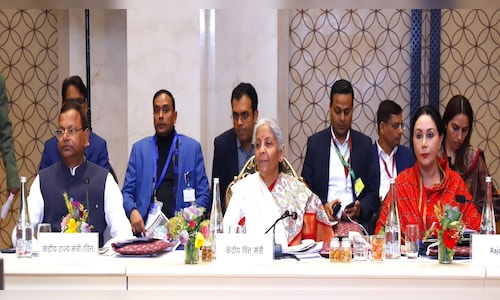

| Company | Value | Change | %Change |
|---|
The budget could also consider reducing marginal tax rates for personal income up to ₹20 lakh per annum. This would help trigger the virtuous cycle of consumption, higher growth and higher tax revenue, said CII.
Asserting that the gap between the highest marginal rate for individuals at 42.74% and the normal Corporate Tax Rate at 25.17%, is high, it said, inflation has reduced the buying power of lower and middle-income earners.
“The central excise duty alone accounts for approximately 21% of the retail price for petrol and 18% for diesel. Since May 2022, these duties have not been adjusted in line with the approximately 40% decrease in global crude prices. Lowering excise duty on fuel would help reduce overall inflation and increase disposable incomes,” the industry body said.
Chandrajit Banerjee, Director General, CII, said domestic consumption has been critical to India’s growth story, but inflationary pressures have somewhat eroded the purchasing power of consumers.
“Government interventions could focus on enhancing disposable incomes and stimulating spending to sustain economic momentum. Persistent food inflationary pressures particularly impinge upon low-income rural households who allocate larger share to food in their consumption basket”, he added.
According to him, while recent quarters have shown promising signs of recovery in rural consumption, targeted government interventions, such as increasing per unit benefit under its key schemes like MGNREGS, PM-KISAN and PMAY, and providing consumption vouchers to low-income households, can further enhance the rural recovery.
In its pre-budget proposals, CII has also recommended an increase in the daily minimum wage under the MGNREGS from ₹267 to ₹375 as suggested by the ‘Expert Committee on Fixing National Minimum Wage’ in 2017, with the industry body estimating that this will entail an additional expenditure of ₹42,000 crore.
Further, it urged the government to raise the annual payout under the PM-KISAN scheme from ₹6,000 to ₹8,000. Assuming 10 crore beneficiaries, this will entail an additional expenditure of ₹20,000 crore, CII said.
The Confederation of Indian Industry (CII) also sought an increase in the unit costs under the PMAY-G and PMAY-U schemes, which have not been revised since the scheme’s inception.
The CII suggested the introduction of consumption vouchers, targeted at low-income groups to stimulate demand for specified goods and services over a designated period.
The vouchers could be designed to be spent on designated items (specific goods and services) and could be valid for a designated time (like 6-8 months), to ensure spending. The beneficiary criteria can be defined as Jan-Dhan account holders who are not beneficiaries of other welfare schemes.



